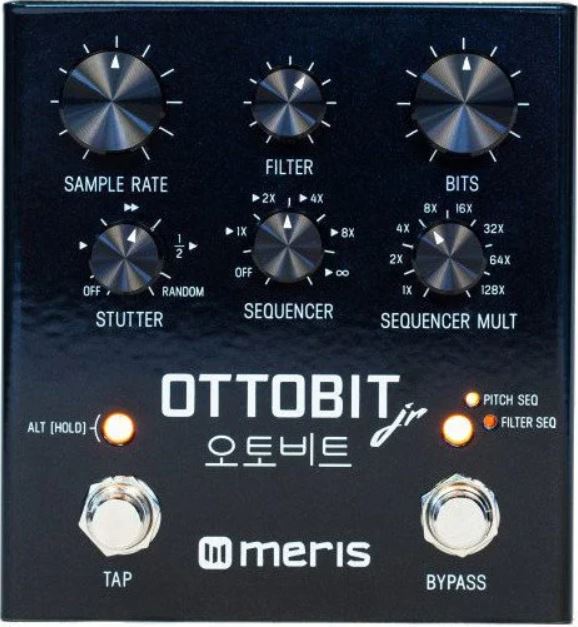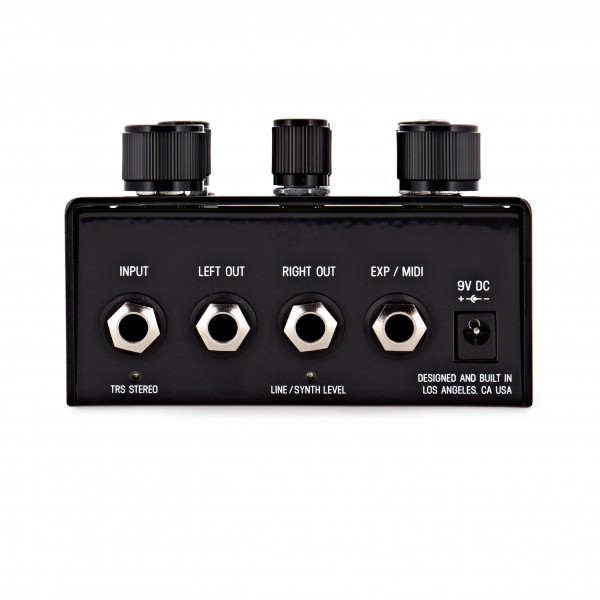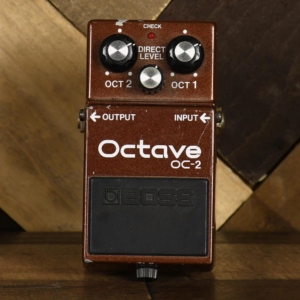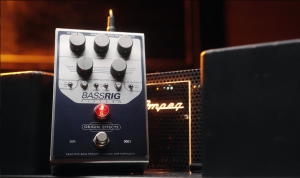Bitcrushing the Bass
The Meris Ottobit Jr. isn’t a distortion box, a traditional synth emulator, or a one-trick glitch pedal. It’s a high-resolution sound manipulator with digital DNA and modular soul — inspired by vintage gaming systems, early digital processors, and rhythmic control schemes that come from the world of analog synthesis.
At its core, it’s a bitcrusher — but to stop there would undersell what the Ottobit Jr. really is. It’s also a sequencer, stutter machine, resonant filter, tremolo engine, and a CV-controllable modulation hub. For bass players, that means access to new textures and performance dynamics that aren’t just novel — they’re musically powerful.
More than just a lo-fi gimmick, the Ottobit Jr. can completely transform how your bass occupies a mix, or create entire rhythmic frameworks from a single note. Whether you’re laying down robotic funk, chopped ambient pulses, or crushing 8-bit grime, this pedal speaks bass fluently — but with a heavy digital accent.
Why Bitcrushing Matters for Bass
Bitcrushing isn’t about overdrive or fuzz in the traditional sense — it’s about reducing resolution. That means cutting down bit depth and sample rate, degrading the signal into crunchy, digital artifacts. On bass, this does a few important things:
- Introduces texture and harmonic content that low-end frequencies often lack.
- Adds rhythmic crackle and edge to sustain-heavy or drone-like notes.
- Pushes clean, hi-fi tones into hyper-digital, almost percussive artifacts.
- Turns the bass into something closer to a synth voice — rich in aliasing, noise, and glitchy movement.
And unlike most bitcrushers, the Ottobit Jr. allows you to dial in musical control, sequencing, and dynamic performance. This is what sets it apart.

Core Controls and Features
The pedal uses dual-layered control mapping — knobs and secondary functions — and offers stereo output, MIDI, and expression/CV input, making it surprisingly deep for its compact form. Here’s how it all translates for bassists:
Bitcrusher & Sample Rate Reduction
- Bit Depth: Adjustable from 24-bit to 1-bit. Lower bits = more distortion, harmonic crunch, and “steppy” texture.
- Sample Rate: Slows down the sampling frequency to introduce aliasing, digital shimmer, and clocking artifacts.
- These core features allow for everything from gentle vinyl-like warmth to complete signal obliteration.
- On bass, low sample rates introduce metallic overtones, while low bit depths add dirty, gated compression.
Sequencer
- A built-in 6-step sequencer allows pitch and filter movement in rhythmic loops.
- Can be synced to tap tempo or external MIDI clock.
- On bass, this creates arpeggiated pulses, dynamic filter sweeps, or stepped tremolo effects that breathe life into sustained notes.
- You can assign the sequencer to affect pitch, filter cutoff, or amplitude.
Stutter
- Momentary or latching glitch effect that repeats a small sample of your input.
- Can be used rhythmically (almost like slicing), or as a chaos burst.
- On bass, it’s great for live fills, breakdowns, or adding mosaic-like texture to static parts.
Filter
- A powerful resonant low-pass filter.
- Can be modulated via sequencer, envelope, or expression pedal.
- Adds synth-like contour and harmonic shaping — great for turning bass into wobbling, vowel-like tones.
- Responds especially well to playing dynamics, creating interactive, expressive motion.
Modulation
- Internal LFOs modulate filter, pitch, amplitude, or bit/sample rate parameters.
- Can be synced or left free-running.
- Adds subtle movement or wobbling chaos depending on rate and depth settings.
Expression / CV Input
- Any parameter or combination can be assigned to external control.
- Makes the pedal a true performance instrument, especially for swelling, glitch-ramping, or sequence transitions.
Sound Character: Digital but Deep
The Ottobit Jr. is unapologetically digital — this isn’t analog warmth or tube-style breakup. Its charm is in its cold, artificial precision, which paradoxically makes it one of the most expressive modern pedals you can put on a bass pedalboard.
What stands out:
- No low-end loss. It maintains strong fundamentals even when shredding the signal to pieces.
- Reactive feel. Play lightly and the bitcrush subtly ripples. Dig in and it collapses in on itself.
- Presetless freedom. There’s no memory saving onboard, which means the pedal becomes an organic tool — always changing, never sterile.

Effect Combinations and Signal Chain Integration
The Ottobit Jr. is a centerpiece pedal — it wants to be heard. But it also works well in a chain, especially when paired with fuzz, filter, or time-based effects.
With Fuzz/Distortion:
- Fuzz before = saturated signal gets crushed.
- Fuzz after = glitchy, digital signal becomes massive and raw.
With Filter:
- Use a dedicated envelope filter for parallel analog warmth.
- Ottobit’s internal filter interacts musically with external filtering, allowing synth-stacking techniques.
With Delay/Reverb:
- Bitcrushed signal into reverb = choppy ambience or broken lo-fi space.
- Delay after Ottobit turns glitchy phrases into patterned echoes.
With Expression Pedal:
- Assign to sample rate or filter cutoff for wah-like sweeps, filter decays, or real-time glitch control.
- Makes the pedal feel like a modular instrument under your foot.
Usability and Learning Curve
This is not a plug-and-play pedal. The interface is deep, and it rewards experimentation. However, it’s not unwieldy — once you grasp the knob functions (and their alt modes), you’ll start hearing new bass roles emerge:
- Lead synth lines
- Glitched-out rhythm beds
- Broken-beat fills
- Texture layers in ambient passages
Its studio-grade fidelity and musical envelope mean it’s at home in electronic, jazz, industrial, alt-R&B, and post-rock contexts. It’s also a killer secret weapon in sample-based music or layered loops.
Pros and Cons
Pros:
- Incredible sound-shaping depth
- Bitcrush and sample rate reduction that’s actually musical
- Built-in sequencer creates rhythmic possibilities, not just texture
- Filter adds warmth, contour, and motion
- No low-end loss — great with synth or traditional basses
- MIDI and CV friendly
- Inspires composition as much as tone shaping
Cons:
- Learning curve is steep — no presets, cryptic labeling at first
- Can dominate a mix if not tamed
- Not suited for subtle or transparent tone shaping
- Better as a creative tool than a “set-it-and-forget-it” effect
Conclusion: Precision Mayhem, Beautifully Controlled
The Meris Ottobit Jr. doesn’t just color your bass tone — it shatters it and builds something new in its place. It’s rare to find a pedal this capable of both total chaos and tight rhythmic control.
For the experimental bassist, it’s a window into glitch-funk, modular-style sequencing, and textural manipulation rarely accessible outside of full synth setups. But even for groove-based players, it adds digital teeth and motion that transform simple phrases into complex, evolving layers.
If you’re willing to invest time in learning its controls and embrace its digital dialect, the Ottobit Jr. may become one of the most musically expressive and compositionally inspiring tools on your board.





